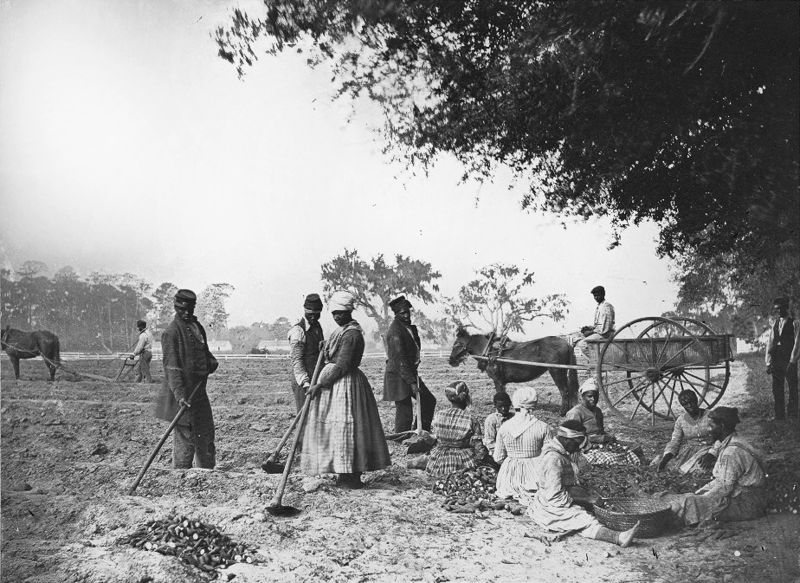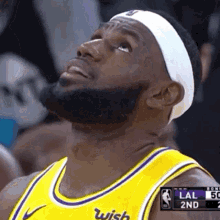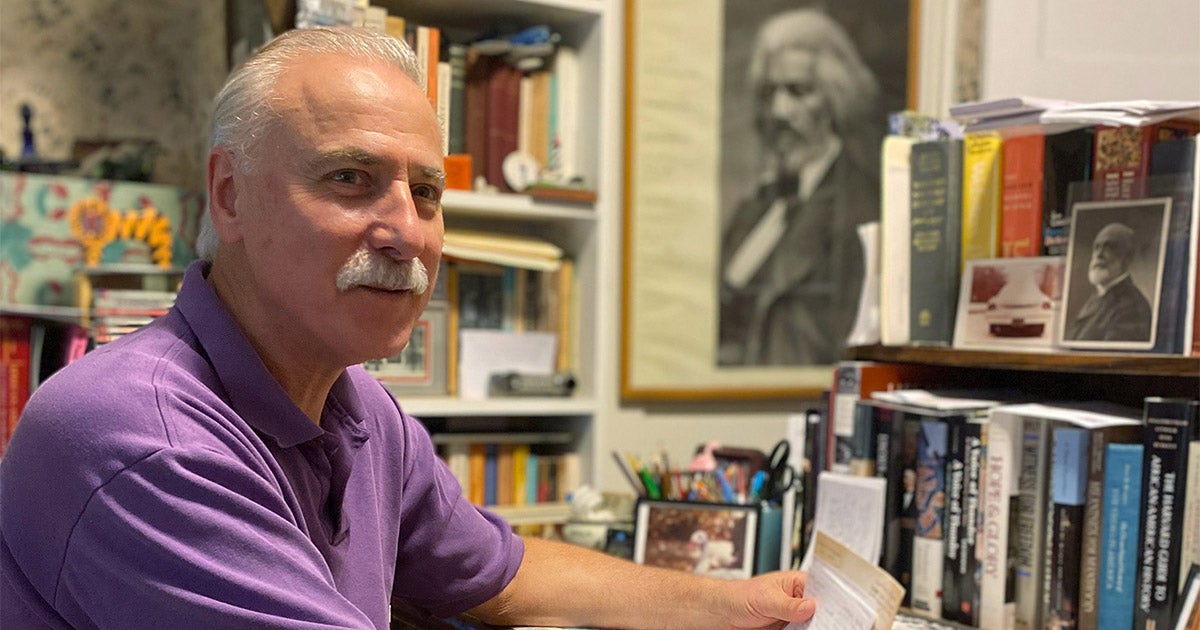
excerpts from:
The Curious History of Anthony Johnson: From Captive African to Right-wing Talking Point
In various corners of the internet, memes circulate about a Black man identified as “Anthony Johnson,” believed to be a pioneer of American slavery and the first slave owner in North America. Intended for shock value, these memes reveal the new ways people disseminate knowledge in the age of social media. Anyone with access to the internet and the necessary software can generate historical narratives that gain disconcerting popularity. Of course, memes are perfect for establishing “Myth-stories,” as they do not ask readers to evaluate the sources and are often shared prolifically.
Though it is not the only myth attached to American slavery, the meme-ing of Anthony Johnson manifests the unique challenges scholars face in combating historical misinformation. As one of the few documented Black landowners in 17th-century Virginia, his unique story has morphed into a manipulative trope used by right-wing activists. From the 1960s–90s Johnson was predominantly known among academics who studied slavery, but interest in his (misrepresented) life has recently gained traction with the advent of digital sharing, discussion sites, and public forums. For instance, as of July 12, 2019 Johnson’s Wikipedia page claims he was a “colonist” sold by “Arab slave traders,” though there is no citation for the latter claim, nor is it supported by historians. It was likely added by a user who hoped to redirect blame from the Atlantic Slave Trade toward the “Arab Slave Trade,” a popular talking point among right-wing commentators. In his podcast disputing reparations for slavery, conservative pundit Michael Knowles reiterated this myth about Johnson without reviewing the available literature. Such historical distortions seek to minimize Europe’s culpability in expanding African slavery and discredit the system’s intergenerational impact upon African Americans.
In 1621, Johnson was delivered to Virginia’s shores as an African captive, simply called “Antonio.” By the mid-17th century, he became a landowner newly named “Anthony Johnson.” His ability to gain freedom resembles the functions of indentured servitude, in which an unfree laborer is bound to work for a landowner for a specific length of time. Once they satisfied the terms of their indenture, they could freely acquire land and capital. Since Anthony Johnson was an unfree laborer of African descent, his freedom and property acquisitions remain a source of confusion for Americans who are otherwise unfamiliar with how slavery evolved throughout the early decades of English colonialism.
A central debate surrounding the parameters of colonial bondage was the status of captive workers, specifically in identifying “servants” vs. “slaves.” It is important to note that terminology was generally more fluid in the 17th century when compared to the hardened identities that emerged in the 18th and 19th centuries. Historians Linda Heywood and John Thornton note that the English borrowed some of their descriptive words from other transatlantic enslavers, and such terms often did not acquire definitive legal classifications until the end of the 17th century. We are also limited by documents that rarely comment on the conditions of bound people with much specificity. However, it becomes clear by the mid-17th century that Africans were being defined differently than white servants, as many Africans were defined as “lifetime” servants, suggesting that the precursors for perpetual, inherited slavery were being linked with racial classifications.
By 1651, Johnson gained his freedom and acquired land and servants, eventually attaining legal ownership “for life” over a Black man named John Casor, a condition that separated servitude (labor for time) from slavery (labor for life). In 2010, Glenn Beck asserted that this case reveals how Johnson owned the first “state-sponsored slave” in American history, and like-minded commentators unsurprisingly agree. In the same episode, Beck insisted that Johnson’s story proves that slavery is a “human problem. … It’s not a white condition or a black condition.” As the narrative goes, if a Black man also owned enslaved people of African descent, it assumes that economics, not racism, bolstered US chattel slavery. For Beck, the existence of Black slaveowners inverts the narrative that American slavery was predicated on white supremacy. However, this narrow framework ignores preceding cases and misrepresents slavery’s complex evolution in the British Atlantic colonies.
The existing scholarship indicates that John Punch was the first man known to be perpetually enslaved on July 9, 1640, a punishment he received for attempting to flee his indenture. He absconded alongside two fellow servants, a “dutchman” named Victor and a “Scotchman called James Gregory.” Following their apprehension, his counterparts each received only one additional year upon their indenture, while Punch, listed as a “negro,” was enslaved “for the time of his natural Life.” Punch’s sentence documents an early framework for the growing attachment between Blackness and enslavement in North America, as the indentured white men did not receive similar punishment. Thus, Hugh Gwyn, the man who owned John Punch, would be the first recognized slaveholder, eliminating the spurious claim that a Black man innovated the North American system. Punch’s experience certainly foreshadowed legal maneuvers in the 18th century. As more African “servants” became permanently enslaved, their status was transmitted to their children. As historian Jennifer Morgan notes, it was this pairing of race, reproduction, and heritability that determined the racialization of chattel slavery in the Western Hemisphere.
To be sure, some secondary works have proposed that African and European bonds-people shared a similar status in colonial Virginia. Historians T.H. Breen and Stephen Innes, whose book Myne Owne Ground is considered the first extensive study of Johnson’s life, claimed that prior to the close of the 17th century, “Englishmen and Africans could interact with one another on terms of relative equality for two generations.” However, historians like Alden T. Vaughan, Lorena Walsh, and Michael Guasco reevaluated the status of such captive Africans in Virginia and elsewhere, concluding that early laws for people of African descent were often determined by their color (not the case for Europeans) and miscegenation laws were specifically designed to preserve the purity of white Europeans. Indeed, in John Punch’s case, his European counterparts each held nationalities, while he was solely defined by a socially-constructed racial identity. Walsh contends that the few Africans who came to the Chesapeake colonies as indentured servants have “confused the issue of the fate of the great majority,” arguing that, unlike European bonds-people, most captive Africans lacked basic information in the documents, including names, ages, and arrival dates. They were rendered anonymous in the historical record, differentiating them from European servants who at least maintained an ethnic identifier beyond their indenture. Thus, even if Africans were not “enslaved” by the later standards of the 19th century, they were certainly not viewed as equal to white servants. These early distinctions eventually shifted toward concrete identifications of chattel enslavement and its explicit links to Blackness throughout the Atlantic.
Such fictive biographies are enticing for those seeking to downplay the role Europeans played in expanding chattel slavery. A cursory search through Twitter reveals that Johnson is evoked by those who deny Black Americans’ claims to legitimate grievances, specifically reparations. Since the HR-40 hearings of June 19, 2019, references to Johnson are especially prominent throughout social media as conservative commentators like Larry Elder and Michael Knowles use him to reject the viability of reparations. Similar claims are evoked by the average conservative Twitter user. In one tweet to Senator Elizabeth Warren, a supporter of reparations, a user disingenuously stated: “you are aware the institution of slavery was brought to these shores by a black Angolan, Anthony Johnson … And as such, please track down his descendants & ask them for reparations.” Knowles even wrote a column declaring that Johnson was America’s first formally recognized slave owner, asking, “Do his descendants get reparations?”
Of course, such dubious statements misrepresent the primary issues raised by their supporters. The broader claim is not that the descendants of individual slave owners owe money to specific descendants of enslaved people, but that American slavery built a system that elevated whiteness while simultaneously reaping devastating consequences for African Americans well after emancipation. But to answer Knowles’s point directly, yes, Johnson’s descendants would be entitled to reparations. In accessing the available literature, one knows that legislative racism eventually subverted any gains he or his descendants made in the colony. According to Henry Louis Gates, after Johnson’s death a court ruled he was “a negro, and by consequence, an alien.” Subsequently, the colony of Virginia seized his family’s land and his descendants fade from the historical record. Presumably, they either fled the colony as anti-Black racism proliferated, or, more likely, they lost their freedom. Anthony Johnson and his descendants exemplify how the US took everything from Black people, even if they followed every rule.
An otherwise interesting figure in American history, Anthony Johnson is now reduced to a trope who supposedly disproves the connections between racism and American slavery. His biography reveals the viability of studying reparations, showing that Black Americans are morally entitled to compensation for the historical wrongs committed by systems, not simply individuals. Unless scholars respond publicly, we risk losing this narrative to political gainsayers.

The Curious History of Anthony Johnson: From Captive African to Right-wing Talking Point - AAIHS
In various corners of the internet, memes circulate about a Black man identified as “Anthony Johnson,” believed to be a pioneer of American slavery and the first slave owner in North America. Intended for shock value, these memes reveal the new ways people disseminate knowledge in the age of...
this is from:
“A Negro and by Consequence an Alien”
Compared with Cuba, seventeenth-century Virginia was a small colonial outpost with few white colonists and even fewer Africans, free or enslaved. Anthony Johnson may have arrived in Virginia in the first shipment of “negars” in 1620, but by midcentury he owned property and slaves in Northampton County, on the Eastern Shore in Virginia. He appears frequently in court records, trading cattle, mares, land, and tobacco with other free people of color and white men. Johnson owned upwards of two hundred fifty acres of land and at least two black servants, as well as several herds of livestock. In 1653 his own servant John Casor sued him for his freedom, claiming that he had been indentured for seven years, whereas Johnson insisted he was a slave for life. Several of Johnson’s white neighbors backed Casor’s claim, and the following year Johnson took the aggressive approach of suing one of the neighbors, George Parker, for “detaining” Casor on his property. Johnson won, and Casor returned to bondage. Johnson’s son John received a patent for land after suing a white resident of Northampton who had tried to take possession of the land illegally. In 1667 Johnson was charged with stealing corn from a Native American man and apparently received the same sentence as his two white partners in the crime. And several years after that he was sued by a white man, Randall Revell, and was allowed to testify against Revell after declaring that he was a Christian and understood the meaning of taking an oath.5
Yet by the time Anthony Johnson died, his property could not protect his children from discrimination on the basis of race. His land reverted (“escheated”) to the Crown when he died in 1670 because “he was a Negroe and by consequence an alien.”6 In the late seventeenth century, Virginia’s colonial legislators began to pass laws constituting blackness as a debased condition. By the early eighteenth century, it would have been impossible for Johnson or his son to appear in court to testify against a white man. Statutes spoke of “negroes and other slaves” as though “negroes” were by definition enslaved – and uniquely appropriate for enslavement.
By marking out areas of public life reserved for white people, and relegating even free people of African descent to a degraded position in colonial society, colonists in both Cuba and Virginia created race through law – as did the French colonists settling Louisiana a century later. Legal race making became a distinctive feature of Atlantic slave societies, reducing Africans and their descendants to “negroes,” “negros,” “nègres,” or “noirs,” subjects without history, honor, or genealogy. Blackness obliterated and flattened a multitude of cultures, languages, histories, and experiences into a single legally defined, socially constituted category of degradation.7 Across linguistic and imperial barriers, the law constituted “blacks” as social outcasts, conflating their social existence with enslavement. Legal prohibitions that applied to “all black men and women, free or enslaved,” or defined certain actions by “any black or mulatto” against “whites” as a crime, made blackness, rather than enslavement, the mark of degradation.8
Across the Americas, slaveholding elites began the process of legal race making almost as soon as they arrived in the colonies. The Iberians, however, had a head start. Unlike the British and the French, by the sixteenth century the Iberians had already advanced considerably in the creation of a legal doctrine that identified negros (and occasionally mixed-race mulatos or pardos as well) with slaves, and that rendered people of African descent socially degraded and culturally inferior. By the time they arrived in Havana, Spanish colonists could draw on Iberian social and legal precedents that had already settled key questions concerning slaves, such as the heritability of slave status, the compatibility of slavery and baptism, and the indelible social stains associated with enslavement. French colonists arrived in Louisiana in the early eighteenth century with decades of experience enslaving Africans in the Caribbean. By contrast, Virginia’s colonists lacked clear legal precedents for slavery, and thus important questions about the relationships among Christianity, African origin, and enslavement remained unsettled and open to interpretation in Virginia. This created opportunities for slaves and free blacks that were absent in the Spanish and French colonies. Although it is true that Iberians arrived in the New World with a slave code, the Siete Partidas, that referred to the slave “as a human being,” whereas British planters could define slaves as “chattel,” the practical effect of Iberian legal and social precedents was to arrive even more quickly at hardened racial distinctions in the law.9
The Spanish colonists in Havana built on their experience of slavery on the Iberian Peninsula. Although the number of “white slaves” (from North Africa or the eastern Mediterranean) in Iberia was far from negligible in the sixteenth century, the proportion of sub-Saharan Africans was growing fast, and they represented the overwhelming majority of the enslaved in the colonies. By as early as the sixteenth century, “negros” were deemed to be people “without honor and faith” and described as ugly, barbarous, and savage. Hell itself was associated with blackness. As a tutor to the prince of Portugal explained in 1535, when he arrived in Portugal he felt he had been “transported to a city in hell; indeed, everywhere [he] looked [he] saw nothing but blacks.” The Spanish concept of limpieza de sangre, or purity of blood, developed in the fifteenth century to distinguish between “Old Christians” and those of Jewish, Muslim, or heretical origin, also shaped Iberian ideas of difference between Africans and Europeans. When Spaniards traveled to the New World, ideas of purity of blood as applied to Africans contributed to early modern conceptions of race.10
Iberian legal ordinances blurred the line between social status and skin color or African ancestry. In early sixteenth-century Lisbon, for instance, a variety of prohibitions applied to black people both free and enslaved. As of 1515, “black women,” either slave or free, “could sell their wares only” in certain designated spaces, and by midcentury these black petty traders, again regardless of social condition (and this time, also regardless of gender), were subject to special penalties when they defrauded customers. “Blacks” were also forbidden from holding dances and gatherings. Laws segregated the city’s municipal fountain according to race, with separate spouts for whites and for all others, enslaved or free.11 Slaveholders in Havana and other Spanish colonies ruthlessly and expeditiously built on these precedents to create racially discriminatory legal systems for los negros.
Building on local legal precedents and racialized understandings of blood purity, the Iberians pioneered the creation of racist legal regimes in the Americas; by the early eighteenth century, British and French colonies had caught up to them.12 From their institutional bases of power, in the cabildos (town councils), in the courts, and, later, in consultative bodies such as the Real Consulado de Agricultura y Comercio, slaveholders in Cuba created a racist slave legal regime that prefigured the slave codes of Virginia and Louisiana.13
Legal Borrowings
None of these legal regimes developed in isolation. The Europeans who introduced African slaves and slavery into the New World built on practices and principles that circulated around the Atlantic. Many of the Spanish colonizers came from (or through) cities such as Seville, Lisbon, and Valencia, the slaveholding capitals of sixteenth-century Western Europe. Northern Europeans were less familiar with both slavery and African peoples, but even they knew about the institution. Trade and exchanges with the Iberian Peninsula through the late Middle Ages had spread information about slavery and Africans. By the fifteenth century some basic principles, such as the impropriety of enslaving fellow Christians, were widely shared and respected.14
Colonizers and lawmakers in new colonies borrowed slave regulations from other colonial legal regimes. Enslaved people also drew on their experiences in other colonial settings as they made claims on legal institutions, invoking different understandings of law and rights as they moved around the New World. When a slave named Fernando sued his Virginia master in 1667 for wrongful enslavement, for example, he used legal strategies that he probably had acquired in an Iberian colony, “pretending hee was a Christian and … present[ing] several papers in Portugell or some other language which the Court could not understand which he alledged were papers From several Governors where hee had lived as a freeman.” Many of the first Africans imported into Virginia had spent some time in Caribbean colonies first, not only Barbados but also Spanish holdings, as evidenced by the Spanish names of some early enslaved and free men of color on the Eastern Shore of Virginia. Judicial authorities in Virginia did not have a clear body of slave law to rely on, as the Spanish colonists did, but they appealed to established legal practices elsewhere and drew from the English legislation on vagabonds and other masterless subjects.15
Later slave legal regimes had the advantage of hindsight and could build on previous practices and solutions. By the time the English settled Virginia in the early seventeenth century, the enslavement of Africans had already spread across the New World. In adjudicating the status of Africans and their descendants, such as Fernando, the English colonists could follow the lead of the Iberians and conclude that slavery was a permanent condition, and apply the principle of partus sequitur ventrem, according to which slave status passed from mother to child. By the time African slaves arrived in Louisiana, the French had already accumulated significant experience with slavery in the Caribbean colonies of Martinique and Guadeloupe. French legislation and legal principles concerning slaves were readily transplanted to Louisiana. Like the English, the French borrowed Iberian legal practices that settled some of the thorniest questions concerning slaves, such as those addressing conversion to Christianity and baptism. As the Dominican friar Jean-Baptiste Du Tertre casually acknowledged, French slaveholders were attentive to how other Christian nations managed their slaves.16
The Virginia colonists lacked the direct cultural and legal references available to the Spanish and French. Although it is now well established that the British imported Africans from the first as slaves, Virginia during the early decades of the colony was characterized by a high degree of uncertainty about many of the basic rules regarding slavery. There were no provisions for slavery in English common law because slavery had disappeared there several centuries earlier. Villeinage, the British form of serfdom, was not seen as a suitable precedent for the regulation of slaves. Although apprenticeship, which bound a servant to a master for a period of years, bore some similarities to slavery, and early colonial statutes sometimes lumped together English indentured servants with African slaves, the law of master and servant left open important questions. The first British colony to develop a slave code, Barbados, did so in 1661, decades after the first slaves had set foot in Virginia. The Barbadian code drew on French and Spanish colonial slave laws as well as English master-servant law, but Virginia’s lawmakers did not borrow wholesale from Barbados as their fellow colonists in South Carolina did, waiting instead until 1691 to pass their first comprehensive slave code. Thus Africans in early colonial Virginia had an ambiguous legal status that was unthinkable in the Spanish colonial world.17
When the French sought a legal basis for slavery in Louisiana a century later, they drew on a different set of legal precedents – the 1685 Code Noir for the French colonies in the Caribbean, as well as local regulations – to draft the Louisiana Code Noir of 1724. Antillean officials had drafted the first Code Noir in 1685, based on the first fifty years of French experience with slavery. Like Spanish law, it established certain protections for slaves, including the right to observe Sundays free from work, and the right to petition in cases of abuse. Masters over the age of twenty had the right to manumit their slaves for any reason and without permission, and freed people gained all “the same rights, privileges, and liberties enjoyed by persons born free,” although they were also required to “retain a particular respect for their former masters, their widows, and their children.” Any insult to the former master’s family would be “punished more severely tha[n] if it had been done to another person.” This code was in force in Saint-Domingue, Martinique, and Guadeloupe for nearly forty years before the colony of Louisiana was established. Thus, the French already had a great deal of practice when it came to the regulation of African and Indian slaves.18
Z-Library single sign on
Z-Library single sign on | Z-Library. Download books for free. Find books
As a Black person how would you feel if you found out your Black colonial ancestors owned slaves??
@playahaitian @Shaka54 @VAiz4hustlaz @blackpepper @AllUniverse17
Last edited:












